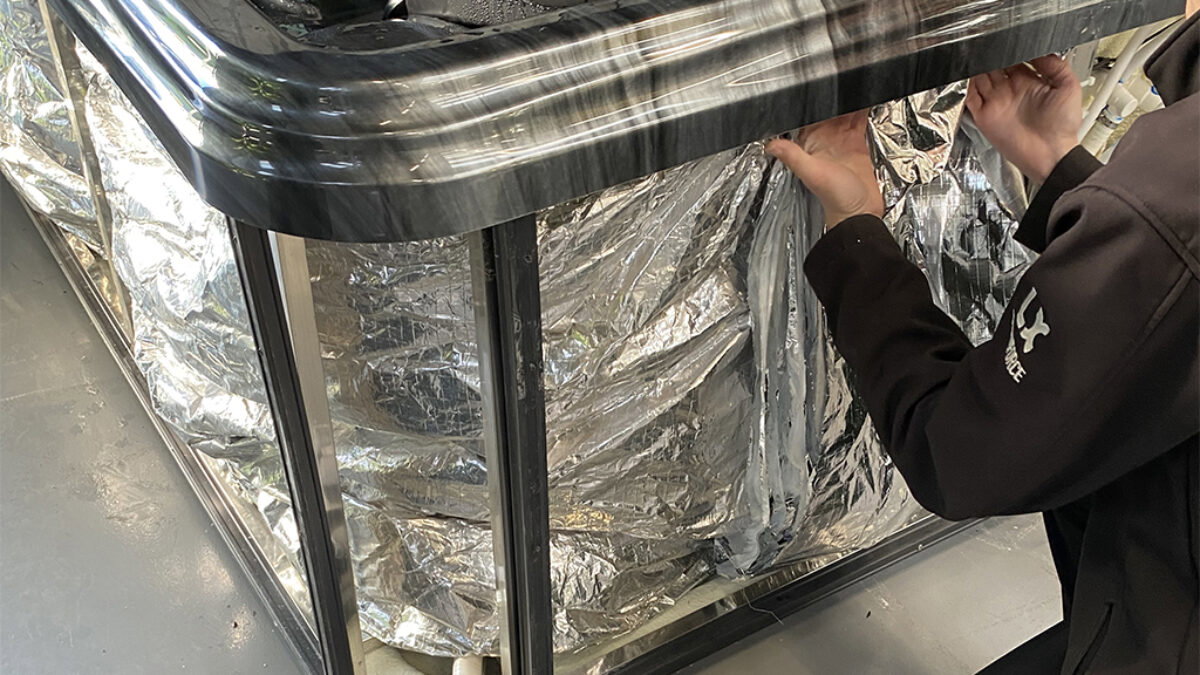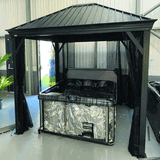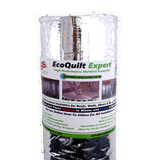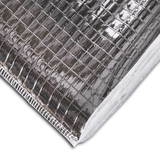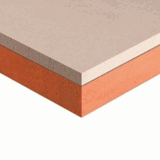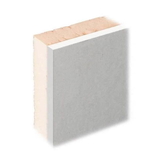- Blogs
- Keep Your Hot Tub Toasty: The Ultimate UK Guide to Insulation, Savings, and Standards
Keep Your Hot Tub Toasty: The Ultimate UK Guide to Insulation, Savings, and Standards

Introduction: Why Your Hot Tub Deserves the Best Insulation
The dream of owning a hot tub – a personal oasis for relaxation, social gatherings, or therapeutic soaks – is a compelling one for many UK households.
However, this dream is often accompanied by a pragmatic concern, particularly relevant in the cooler British climate: the ongoing running costs, with energy consumption being a primary factor.
Inexpensive hot tubs, especially some inflatable models or very cheaply advertised hard-shell units, might seem like a bargain initially, but can prove costly in the long run due to poor insulation leading to higher electricity bills.
The reality of UK energy prices further highlights the need for efficiency.
Insulation, therefore, should not be viewed as a mere optional extra, but as a key aspect of your hot tub's performance, overall economy, and longevity.
The benefits of effective insulation are numerous, extending from significant reductions in energy expenditure to improved user comfort through consistently warm water.
Good insulation contributes to the prolonged operational life of the spa's components and aligns with a more environmentally conscious approach to leisure.
Understanding the critical role of insulation is the first step towards maximising the enjoyment and value derived from a hot tub investment.
This guide aims to explore the complexities of hot tub insulation.
It will look into the various materials employed, the different methods of application, the crucial role of an effective cover, and relevant UK standards and guidance.
It will also touch upon important fire safety and water resistance considerations for these materials, providing prospective and current hot tub owners with the knowledge to make informed decisions that balance upfront investment with long-term savings, satisfaction, and safety.
The Real Perks: Benefits of Good Hot Tub Insulation ![]()
Investing in a well-insulated hot tub, or upgrading the insulation of an existing one, offers a range of tangible benefits that go far beyond simple heat retention.
These advantages contribute to lower running costs, improved user experience, and the overall durability of the spa.
Reducing Your Energy Bills: How Insulation Works to Save Money
The basic principle behind hot tub insulation is straightforward: it minimises heat loss from the spa water to the surrounding cooler air.
A well-insulated hot tub requires substantially less energy to maintain its set temperature because the heater does not have to work as hard or as frequently to compensate for escaping warmth.
Without adequate insulation, heat dissipates rapidly, compelling the heating system to operate almost continuously, which inevitably leads to significantly higher electricity bills.
The financial impact can be significant.
For instance, some analyses suggest that comprehensive insulation, such as a full-fill system, can reduce energy consumption by as much as 30% compared to poorly insulated models.
This reduction in energy usage translates directly into lower monthly outgoings, making the hot tub a more affordable luxury to operate year-round.
Quicker Heating, Longer Warmth: Enjoying Consistent Temperatures
Effective insulation not only saves money but also improves the convenience and enjoyment of using a hot tub.
Well-insulated spas heat up more quickly from cold and, importantly, maintain their warmth for extended periods even when the heater is not actively running.
This is particularly advantageous in the UK's often chilly climate, where ambient temperatures can quickly sap heat from an unprotected tub.
The practical benefit for the owner is a hot tub that is more readily available for spontaneous use, without the frustration of lengthy pre-heating cycles.
Consistent water temperature also means a more comfortable and predictable soaking experience every time.
Protecting Your Investment: Extending Spa Life and Reducing Wear
Good insulation, particularly certain types of foam and full-fill systems, offers more than just thermal resistance; it can also provide vital structural support to the hot tub's shell and its intricate network of plumbing.
This is a significant, though often overlooked, benefit.
The operation of pumps and jets inevitably causes vibrations, which, over time, can lead to wear and tear on pipes, joints, and other components.
By encapsulating the plumbing and supporting the shell, insulation can dampen these vibrations, reducing stress on the system.
This, in turn, can lead to a lower incidence of leaks and component failures, potentially extending the overall lifespan of the hot tub and reducing the likelihood of costly repairs.
Some insulation materials also offer protection against damage from extreme weather conditions.
An Eco-Conscious Choice: Reducing Your Carbon Footprint
In an era of increasing environmental awareness, the energy efficiency of home appliances is a growing consideration.
By significantly cutting down on the electricity needed to heat and maintain water temperature, well-insulated hot tubs inherently have a smaller carbon footprint than their poorly insulated counterparts.
Choosing a hot tub with superior insulation, or taking steps to improve existing insulation, is therefore not only a financially prudent decision but also a more sustainable one, contributing to reduced energy demand and a lesser environmental impact.
Understanding Hot Tub Insulation: A Look at Common Materials Used in the UK
Choosing the right insulation material is very important for a hot tub's efficiency and safety.
Several types of materials are commonly used in the construction and improvement of hot tubs in the UK, each with distinct properties, applications, fire safety, and water resistance characteristics.
The optimal choice often depends on the specific part of the hot tub being insulated, the desired level of thermal performance, budget, moisture resistance, serviceability, and adherence to fire safety standards.
Foam Insulation: The Workhorse of Warmth
Foam remains a key material for hot tub insulation due to its excellent thermal resistance.
It is typically applied around the hot tub's shell and internal components in various forms.
Rigid Foam Boards (e.g., Expanded Polystyrene - EPS, Extruded Polystyrene - XPS, Polyisocyanurate - PIR):
These are pre-formed, lightweight boards of closed-cell foam.
-
EPS (Expanded Polystyrene): EPS offers good thermal performance.
- Water Resistance: EPS is moisture-resistant due to its closed-cell structure, making it resistant to rot and mould. However, prolonged exposure or submersion can lead to some water absorption over time, especially if not properly protected by a vapour barrier, which can degrade its insulating properties. It is often used in hot tub covers where it is typically wrapped in a polyethylene vapour barrier to prevent waterlogging.
- Fire Hazard: Standard EPS is combustible (Euroclass E or F). It can release toxic gases when burning. EPS used in construction and potentially in hot tubs is often treated with fire retardant additives (FRAs).
-
XPS (Extruded Polystyrene): XPS boards also have a closed-cell structure, generally offering slightly better thermal performance and greater compressive strength than EPS.
- Water Resistance: XPS is highly moisture-resistant, with very low water absorption rates, making it suitable for damp environments and direct ground contact. It retains its insulating properties well even when exposed to moisture.
- Fire Hazard: Standard XPS is flammable (often Euroclass D or E) and can produce toxic smoke. It is commonly treated with flame retardants. Some XPS boards may state they contain flame retardant but must not be exposed to open flames, with some having a Euroclass F fire rating.
-
PIR (Polyisocyanurate): PIR boards are known for their excellent thermal performance and are often foil-faced.
- Water Resistance: PIR insulation is generally moisture-resistant due to its closed-cell structure, with low water absorption rates. The foil facing on many PIR boards acts as an effective vapour barrier, further enhancing its resistance to moisture ingress. However, prolonged or excessive wetness can still affect performance if the core is exposed.
- Fire Hazard: PIR insulation boards can achieve varying fire ratings, from Class 0 to Class 1 under UK Building Regulations, and some products can achieve a Euroclass B or C rating. While offering better fire performance than polystyrene foams, PIR can release toxic smoke when combusted.
Rigid foam boards are often utilised in partial foam insulation methods, where they are fitted against the hot tub shell or cabinet walls.
They are a primary material for the core of hot tub covers, providing both insulation and structural integrity.
Some UK manufacturers also use high-density EPS or XPS to insulate the base of the hot tub cabinet to prevent heat loss to the ground.
Multifoil Insulation (Thermal Wraps and Blankets)
Multifoil insulation, increasingly popular in the UK, consists of multiple layers of thin, reflective materials (like aluminium foil) interspersed with wadding, thermo-foam, or polypropylene.
These blankets work by reflecting radiant heat and reducing heat loss through conduction and convection.
For optimal performance, multifoils rely on an unventilated air gap next to their reflective surfaces.
In UK hot tubs, multifoils are commonly found as thermal wraps or blankets lining the inside of the cabinet.
They are also available as DIY kits. Brands like YBS, SuperFOIL, and Actis are known in the UK building sector.
Advantages include being lightweight, thin, flexible, and easy to install.
- Water Resistance: When properly taped and sealed with foil joining tape, multifoil insulation can act as an effective vapour control layer, preventing moisture from passing through. The outer foil layers are impervious to water. However, if the internal wadding or foam layers become wet (e.g., through unsealed joints or damage), their insulating properties can be compromised. Some breathable multifoils are designed to allow water vapour to escape while preventing liquid water penetration.
- Fire Hazard: The fire performance of multifoil insulation varies significantly. While the aluminium foil layers are non-combustible, the inner wadding or foam layers can be flammable. Some multifoil products are marketed with fire ratings (e.g., Euroclass B or A2 for certain vapour control layers, or even A1 for specialised non-combustible versions). It's important to check the fire rating of the entire composite product. Poorly chosen or installed multifoil blankets could pose a fire risk if combustible components are exposed to heat sources. Some reflective insulation products may achieve a Class 1 fire rating according to certain testing standards.
General Fire Safety Considerations for Hot Tub Insulation
When considering hot tub insulation, fire safety is very important.
In the UK, building materials, including insulation, are often classified according to the Euroclass system (BS EN 13501-1), which ranges from A1 (non-combustible) to F (easily flammable).
-
Material Choice: Opting for materials with better fire ratings (e.g., A1, A2, or B) can significantly reduce fire risk. Materials like mineral wool and fibreglass are inherently non-combustible (A1).
-
Flame Retardants: Many combustible insulation materials like EPS, XPS, PIR, and some polyurethane foams are treated with flame retardants to slow ignition and flame spread. Fibreglass insulation may be treated with borate compounds to increase fire resistance.
-
Installation: Proper installation is vital. Insulation should not be placed too close to heat sources like pumps or heaters unless specifically designed for such applications. Ensure electrical components are not improperly covered, which could lead to overheating.
-
Encasement: The hot tub cabinet itself provides a degree of separation. However, the materials lining the cabinet or filling the void contribute to the overall fire load.
-
Vapour Barriers: If vapour barriers are used (often polyethylene films in multifoils or as separate layers), their fire rating should also be checked. Some are available with flame-retardant properties (e.g., Euroclass B).
-
Hot Tub Covers: Covers typically use EPS foam cores. While the marine-grade vinyl outer layer may have UV and mildew resistance, its fire resistance, and that of the EPS core, are important safety aspects.
Always look for products that clearly state their fire performance according to UK or European standards.
If in doubt, consult the manufacturer or a qualified professional.
Methods of Insulating: What Lies Beneath the Surface ![]()
Beyond the materials themselves, the way insulation is applied within the hot tub cabinet dramatically affects its ability to retain heat and overall energy efficiency.
Different methods offer varying levels of thermal performance, structural support, and accessibility for maintenance, with several approaches common in the UK market.
Full-Fill Insulation
Full-fill insulation aims to completely fill the cavity between the hot tub shell and the exterior cabinet panels with insulating material, leaving only the equipment bay uninsulated for access and ventilation.
This method is considered highly effective for maximising thermal retention.
Modern approaches include innovative materials like FiberCor® by Watkins Wellness (found in Hot Spring® spas available in the UK), which is a loose-fill, wool-like fibre that completely fills the cabinet. * FiberCor® Water Resistance: FiberCor® is described as an inorganic material that prevents mould and mildew, suggesting good resistance to moisture-related issues. Being inorganic, it is less likely to absorb and retain water compared to organic fibre insulations. * FiberCor® Fire Hazard: FiberCor® is described as "non-hazardous" and "inorganic." Inorganic materials generally have better fire resistance.
Some UK brands like H2O Hot Tubs also describe their models as having "full-foam insulation" using high-density foam layers.
Jacuzzi® also refers to "full foam insulation" in their models.
This type of full-cavity fill minimises air gaps, significantly reducing heat loss and potentially lowering energy consumption compared to partially insulated models.
Beyond thermal benefits, a comprehensive fill can offer excellent structural support to the shell and plumbing, dampening vibrations and potentially reducing the risk of leaks.
A key consideration has always been service access; however, some modern full-fill systems like FiberCor® are designed to be easily removable and replaceable, addressing this concern.
Partial Foam Insulation
Partial foam insulation typically involves applying a layer of insulating material, such as rigid foam boards (like Expanded Polystyrene - EPS, Extruded Polystyrene - XPS, or Polyisocyanurate - PIR), directly to the underside of the hot tub shell.
This leaves a significant air space within the cabinet between the insulated shell and the cabinet walls.
While an improvement over no insulation, it is generally less energy-efficient than a full-fill system due to potential convective heat loss within the air gaps.
This method can be less expensive initially and may offer easier access to some plumbing.
For the cooler UK climate, the energy savings offered by more comprehensive insulation often outweigh the slightly lower initial cost of a partially foamed tub.
Perimeter Insulation
Perimeter insulation involves placing insulation material, such as foam boards or reflective multifoil blankets, along the inside surfaces of the hot tub cabinet panels and often across the base.
The idea is to create an insulated box around the hot tub components, trapping some of the waste heat generated by the pumps and heater within the cabinet to help maintain water temperature.
This method does not fill the entire cavity like full-fill systems.
Advantages of perimeter insulation include potentially easier access to all components for servicing and repairs, as the central cavity remains largely open.
It can also be a more cost-effective manufacturing approach.
Hydropool's HydroWise™ Thermal Shield system, available in the UK, is an example that utilises thermal blankets in a perimeter fashion, aiming to recycle pump heat.
However, perimeter insulation generally offers less structural support to the plumbing compared to full-fill methods.
There is also a risk of components overheating if the cabinet is too well sealed without adequate ventilation, especially during warmer weather, though some designs incorporate adjustable vents to manage this.
Energy efficiency is typically lower than full-fill systems.
The Reality of No Insulation
Some hot tubs, particularly inflatable models and very basic, low-cost hard-shell units sold in the UK, may come with little to no insulation at all.
While the initial purchase price of such tubs is attractive, the long-term running costs can be exceptionally high, especially in the British climate.
Without any significant barrier to heat loss, these hot tubs struggle to maintain water temperature.
This means the heater must work almost constantly, leading to excessive energy consumption.
Heating times from cold will be significantly longer, and the water will cool down very quickly when the cover is off or the heater is not running.
This constant cycling and hard work also place considerable strain on the heating element and pumps, potentially shortening the lifespan of the spa.
Uninsulated tubs are also more vulnerable to freezing in cold weather, which can cause severe damage.
For UK users, an uninsulated hot tub is generally an impractical and uneconomical choice for year-round enjoyment.
The consistent theme is that air gaps, whether intentionally designed as in partial or perimeter systems, or resulting from poorly fitted insulation, are detrimental to optimal thermal performance.
Heat loss through convection within these voids undermines the insulating capability of the materials themselves.
This highlights the importance not just of the inherent insulating properties of the material, but also the completeness and integrity of the insulation envelope around the hot tub.
The Unsung Hero: Why Your Hot Tub Cover is Crucial ![]()
While much attention is rightly given to the insulation within the cabinet and shell of a hot tub, the cover plays an equally, if not more, critical role in maintaining energy efficiency and reducing running costs in the UK.
It is often the first and most significant line of defence against heat loss.
A significant amount of a hot tub's heat, estimated to be as high as 60% to 80%, can be lost through the surface of the water, primarily due to evaporation and rising warm air, if the tub is left uncovered or if the cover is inadequate.
This makes a high-quality, well-fitting cover arguably the single most important insulation component of the entire hot tub system.
Even the best cabinet insulation will be undermined by a poor or damaged cover.
Several key features distinguish a quality, energy-efficient hot tub cover suitable for UK conditions.
The core material is typically high-density Expanded Polystyrene (EPS) foam, chosen for its good insulating properties and structural rigidity.
The thickness of this foam core is very important; effective covers are often 4 to 6 inches (approximately 10cm to 15cm) thick in the centre, tapering towards the edges to allow rainwater run-off.
This taper not only aids insulation but also prevents pooling and potential damage.
A snug fit to the spa shell is essential to prevent gaps where heat can escape and cold air can enter.
For foldable covers, a continuous heat seal or insulated baffle along the central hinge is vital to stop heat loss through this common weak point.
The outer material of the cover must be durable, weatherproof, and resistant to UV degradation to protect the inner foam core and maintain its appearance.
Marine-grade vinyl or specialised, treated polyester fabrics are common choices in the UK.
Reinforced stitching and robust handles add to longevity and ease of use.
Critically, an effective internal vapour barrier (e.g., 6mm double-coated, heat-sealed polyethylene) is necessary to prevent the foam core from absorbing moisture and becoming waterlogged.
A waterlogged cover loses its insulating properties significantly, becomes extremely heavy, and puts strain on cover lifters and the cover itself.
Safety locking straps are also a standard feature, securing the cover against wind and preventing unauthorised access, especially by children.
Some premium covers available in the UK may also feature a unique copper lining for added heat reflection.
To further improve thermal performance, some UK owners use supplementary floating thermal spa blankets.
These are typically made from closed-cell foam or bubble-pack material with a reflective layer and are placed directly on the water surface, underneath the main rigid cover.
They provide an additional barrier against heat loss and can also help reduce water evaporation and chemical depletion.
The combination of a high-quality rigid cover and a floating thermal blanket can offer an excellent level of insulation for the water surface.
It is clear that a hot tub cover is not merely a lid but an engineered system, with its various components – foam core, vapour barrier, outer skin, seals, and taper – all needing to work in concert to deliver optimal thermal performance and durability.
DIY Insulation Upgrades: Covers and Kits
For owners of hot tubs with insufficient insulation, or those looking to further boost efficiency, DIY options are available in the UK market. These primarily focus on enhancing cabinet insulation or adding supplementary cover layers.
Hot Tub Insulation Covers (Wraps/Jackets)
Beyond the standard rigid thermal cover that sits on top of the water, additional insulating covers or jackets are available. These are designed to wrap around the exterior of the hot tub cabinet.
These jackets are often made from materials like heavy-duty vinyl on the outside for weather resistance, with an inner layer of insulating material such as foam or multifoil.
The aim is to provide an extra thermal barrier around the cabinet, reducing heat loss from the sides of the hot tub, especially in colder weather.
When choosing such a cover, consider the material's durability, UV resistance, and how securely it fits around your specific hot tub model to prevent wind ingress and maximise thermal benefits.
Hot Tub Multifoil Insulation Kits
For those willing to access the inside of their hot tub cabinet (by removing the side panels), multifoil insulation kits are a popular DIY upgrade in the UK.
These kits typically include a roll of multifoil insulation blanket (composed of multiple layers of reflective foil and wadding/foam), along with specialised foil joining tape and sometimes cutting tools.
The process generally involves measuring the internal perimeter and height of the cabinet, cutting the multifoil blanket to size, and then fitting it around the inside of the cabinet walls, often tucking it behind the main frame and around components.
The reflective surfaces of the multifoil work to reflect heat generated by the pumps and the shell back into the cabinet cavity, while the wadding layers provide some resistance to conductive heat loss.
It's important to ensure a snug fit and to seal all joints and edges with the foil tape to create an airtight barrier and prevent cold air from entering or warm air from escaping.
Care must be taken when working around electrical components and to ensure that essential ventilation for pumps and control systems is not blocked.
Some kits provide detailed instructions for installation.
While these DIY solutions can improve thermal efficiency, the level of improvement will depend on the quality of the kit, the thoroughness of the installation, and the hot tub's existing insulation levels.
Best Practices for Keeping Your Hot Tub Efficiently Insulated
Achieving and maintaining optimal insulation for a hot tub involves more than just the initial purchase; it requires thoughtful consideration of several factors, ongoing attention, and adherence to best practices.
This comprehensive approach ensures that the hot tub operates efficiently throughout its lifespan, keeping energy costs manageable and improving the ownership experience, particularly in the variable UK climate.
From the outset, it is important to select a hot tub with a level of insulation appropriate for its intended use and location.
For year-round outdoor use in the UK, models with high levels of quality insulation, such as full-fill systems in hard-shell spas, are generally recommended by industry experts.
Purchasing from a reputable manufacturer and dealer, ideally one affiliated with industry bodies like BISHTA, can provide greater assurance of the product's quality and the accuracy of its insulation claims.
Consideration should also be given to the base upon which the hot tub rests.
Significant heat can be lost conductively to cold ground, especially if the hot tub is sited on a concrete slab without a thermal break.
Many quality hot tubs available in the UK now feature an insulated base (e.g., using XPS or a sealed ABS pan) as part of their construction.
If not, or for additional protection, an insulated ground mat or pad can be placed underneath the hot tub.
While often marketed for inflatable tubs, the principle of reducing ground contact and heat loss is equally valid for hard-shell models to improve overall thermal efficiency.
For those seeking to maximise energy savings and usability in the UK, a hot tub enclosure, such as a gazebo, log cabin, or a dedicated spa room, can offer substantial benefits.
An enclosure provides an additional protective layer, shielding the hot tub from wind, rain, snow, and cold ambient air.
This creates a more stable microclimate around the spa, significantly reducing heat loss and the energy required to maintain water temperature.
It also improves privacy and allows for comfortable use even during less favourable weather conditions.
Regular checks and proactive maintenance are vital for preserving the effectiveness of hot tub insulation over time.
The cover, being a critical component, should be inspected frequently for any signs of damage, such as tears in the vinyl, broken seals, or waterlogging.
A damaged or water-saturated cover will lose much of its insulating capability and should be repaired or replaced promptly.
If the hot tub cabinet panels are designed to be removable, it is good practice to periodically inspect any accessible internal insulation (like multifoil blankets or foam boards) for signs of moisture ingress, pest damage (rodents can sometimes nest in insulation), or displacement, particularly in tubs that are not fully filled.
For hot tubs that feature adjustable thermal vents (common in some perimeter or hybrid insulation systems designed to prevent component overheating in summer), it's important to use these correctly: typically closed during colder months to retain heat and opened during hot weather if recommended by the manufacturer to allow for equipment bay ventilation.
Failure to manage these vents appropriately can lead to unnecessary heat loss or, conversely, component damage.
The effectiveness of insulation is not static; it requires ongoing owner attention to ensure it continues to perform optimally.
Understanding UK Standards and Regulations for Hot Tubs ![]()
For UK consumers, an awareness of relevant industry standards, guidance, and product markings can be very useful when purchasing a hot tub.
These frameworks aim to ensure products are safe, reasonably efficient, and that manufacturers provide accurate information, helping buyers make choices that align with expectations for performance and running costs.
There isn't a single, comprehensive "insulation law" specifically for hot tubs in the UK; rather, a combination of industry body recommendations, product safety standards (including fire safety), conformity assessment markings, and broader energy efficiency regulations collectively influence the market towards better-insulated and safer products.
Guidance from BISHTA (British and Irish Spa and Hot Tub Association)
BISHTA plays a significant role in the UK hot tub market by promoting high standards of safety, product quality, and ethical trading.
They provide extensive advice for consumers, emphasising the importance of looking beyond the initial purchase price and considering the lifetime running costs of a hot tub.
Prospective buyers are encouraged to ask retailers for detailed information on energy efficiency, including any published test figures related to insulation performance and heat retention.
A key piece of advice from BISHTA is the critical importance of a good-fitting, high-quality hot tub cover for minimising heat loss.
They also strongly recommend purchasing from reputable dealers, particularly those who are BISHTA members.
Membership signifies that the dealer is trained in areas such as water hygiene management, adheres to a published Code of Ethics, and is committed to selling products that comply with relevant industry and statutory standards.
BISHTA produces a range of factsheets for consumers, with Factsheet C40, "Energy Efficiency for Hot Tubs and Exercise Spas," being a particularly relevant resource for understanding insulation and running costs.
The comprehensive BISHTA Standards, provided to their members, also include a dedicated section on Energy Efficiency, which notably references the European standard BS EN 17125.
BS EN 17125: European Standard for Domestic Hot Tubs
BS EN 17125 is the primary European product standard specifically covering domestic (non-commercial) hot tubs and spas.
It addresses various aspects of safety, construction, and performance.
While it is a European standard, its influence is significant in the UK market, as many hot tubs sold in the UK are manufactured to comply with it, ensuring a certain baseline of quality and safety.
One specific requirement mentioned is the maximum allowable water temperature setting, which is 40°C.
Importantly for energy efficiency, the BISHTA Standards have incorporated guidance and requirements from BS EN 17125 into their own energy efficiency section.
This means that BISHTA member retailers are expected to be knowledgeable about, and promote products consistent with, the principles outlined in this European standard.
Its inclusion in industry best practices points to its role in shaping the design of more energy-conscious hot tubs available to UK consumers.
UKCA Marking
The UKCA (UK Conformity Assessed) marking is the product conformity mark required for certain products being placed on the market in Great Britain (England, Wales, and Scotland) following the UK's departure from the European Union.
It shows that the product meets all applicable UK statutory requirements, which can include electrical safety, material safety (including fire safety aspects of components like insulation), and, where relevant, energy performance.
For hot tubs, this marking signifies that the manufacturer has declared conformity with these legal requirements.
Manufacturers are responsible for undertaking the necessary conformity assessment procedures, preparing detailed technical documentation to support their declaration, and affixing the UKCA mark to their products.
The requirement for "Adequate Insulation" can be considered an essential safety and performance aspect that would fall under the umbrella of regulations necessitating UKCA marking.
Consumers should look for the UKCA mark as an indicator that the hot tub complies with UK law.
The Ecodesign for Energy-Related Products and Energy Information Regulations 2021
These UK regulations are part of a broader framework aimed at improving the energy efficiency and reducing the overall environmental impact of a wide range of energy-using products sold in the UK.
The core principle is that manufacturers must design their products to minimise energy consumption during their use and must also provide consumers with clear and detailed information about their energy characteristics.
While the provided information does not specify detailed insulation requirements for hot tubs under these particular regulations, the main objective of promoting energy efficiency is highly relevant.
As hot tubs are significant energy consumers, it is possible that future iterations or specific implementing measures of these regulations could address their energy performance more directly.
For now, the general duty for manufacturers to design for minimal energy consumption supports the trend towards better insulated hot tubs.
Some manufacturers, like Watkins Wellness for their FiberCor® insulated spas, already cite compliance with stringent standards like the California Energy Commission (CEC) requirements, indicating a move towards verifiable energy efficiency.
The combination of BISHTA's industry guidance, the influence of product standards like BS EN 17125, the legal requirement for UKCA marking, and the goals of the Ecodesign regulations creates an environment that encourages manufacturers to offer, and consumers to seek, hot tubs with effective insulation.
Given the potential for misleading claims, particularly from less reputable online sellers, relying on established dealers, checking for BISHTA membership, and looking for the UKCA mark are important safeguards for UK buyers.
Conclusion: Investing in Warmth and Efficiency for Your UK Hot Tub
Considering the world of hot tub insulation can seem complex, but understanding the basics is key to making a good investment that balances upfront cost with long-term enjoyment and manageable running expenses, a particularly important consideration for UK owners facing variable weather and energy prices.
The core message is that quality insulation is not a luxury but a necessity for an efficient and economical hot tub.
For hard-shell spas intended for year-round use in the UK, higher levels of insulation, often achieved through comprehensive full-fill systems using materials like high-density foams, loose-fill fibres, or multi-layered approaches incorporating reflective technology like multifoils, are generally advisable.
When selecting materials, their fire safety characteristics and water resistance, in addition to thermal performance, should be a key consideration.
The critical importance of a high-quality, well-fitting, and well-maintained thermal cover, typically with a thick EPS foam core, cannot be overstated, as it is the primary barrier against significant heat loss from the water surface.
While hot tubs equipped with superior insulation systems, often found in models from reputable UK-focused brands, may command a higher initial purchase price, this should be viewed as a long-term investment.
The ensuing savings on energy bills over the lifespan of the spa can be significant, often outweighing the initial difference in cost.
Good insulation contributes to more consistent and comfortable water temperatures, quicker heating times, and can even prolong the life of the hot tub's components by providing structural support and reducing operational stress.
Ultimately, by prioritising effective and safe insulation and seeking guidance from reputable, BISHTA-affiliated dealers who can provide advice tailored to their specific product ranges and local conditions, UK consumers can choose a hot tub that promises not just relaxation and hydrotherapy, but also years of affordable and sustainable pleasure.
An informed decision today leads to countless warm and worry-free soaks tomorrow.
Legal Disclaimer
The information contained in this article is for general information purposes only.
While we endeavour to keep the information up to date and correct, we make no representations or warranties of any kind, express or implied, about the completeness, accuracy, reliability, suitability or availability with respect to the article or the information, products, services, or related graphics contained in the article for any purpose.
Any reliance you place on such information is therefore strictly at your own risk.
It shall be your own responsibility to ensure that any products, services or information available through this article meet your specific requirements.
The content of this article should not be used as a substitute for detailed investigation or professional advice, nor should it be used to specify materials for any particular application.
All advice and information, particularly concerning safety aspects such as fire performance and suitability of materials for your specific hot tub model and installation environment, should be thoroughly checked and verified by a qualified professional before making any decisions or taking any action.
In no event will we be liable for any loss or damage including without limitation, indirect or consequential loss or damage, or any loss or damage whatsoever arising from loss of data or profits arising out of, or in connection with, the use of this article.
This disclaimer shall be governed by and construed in accordance with the laws of England and Wales.

Samuel Hitch
Managing Director
Buy Insulation Online.
Leave A Reply
Your feedback is greatly appreciated, please comment on our content below. Your email address will not be published. Required fields are marked *


